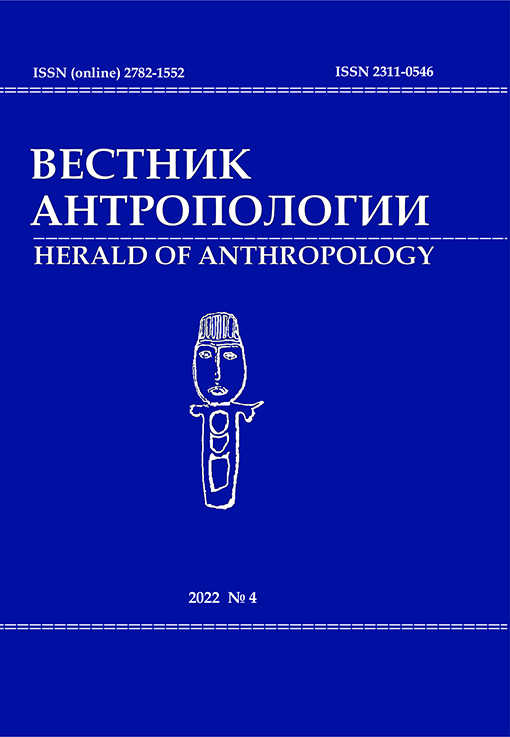(Neo)Shamanism and Shamanic Practices of the Present: From the “Revival of Shamanism” to Ecstatic Trance
DOI: 10.33876/2311-0546/2022-4/297-313
Keywords:
(neo)shamanism, national-cultural revival, magical-medical practices, magical-mystical views and rituals, transpersonal psychology, trans-oriented psychology, ecstatic trance, regressology, health-saving, healthcare, pandemic, covidAbstract
The article deals with individual practices of (neo)shamanism, widespread in the XXI century, against the background of the characteristics of the general situation with the "revival of shamanism" in the late XX – early XXI centuries. The national-cultural revival of the post–Soviet period transformed shamanism, changing its form of existence from individual to collective, with an emphasis on spiritual healing, on the one hand, and on religious activity, on the other. The "revival of shamanism", which led to the widespread spread of neoshamanism, largely stimulated the emergence of various new (or relatively new, borrowed in the West) practices. There are two lines of development of magical and mystical practices in the country: (1) with a focus on national roots and (2) with direct or explicit use of Western knowhow in this area. Within the framework of the former, shamanic organizations were created and power verticals were built within shamanism, which had never known such ideas and concepts before; now this has led to the appearance of the persona of the "Supreme shaman of Russia". The latter sought to form and spread new variants of creative/spiritual activity, not being confined within the scope of one practice and culture, but, according to the ideas of globalization, tried to establish large-scale contacts with representatives of different countries, peoples, cultures. Both of these approaches did not concentrate in their geographical bindings on the same territory/country. They also did not stop in their creative development and transformation of practices. Using the example of several cases, the article examines and analyzes individual groups that associate their activities with the idea of shamanism, as well as the processes taking place with "shamanism" in our country and abroad. Attention is drawn to the magical and medical component in the activities of the groups under consideration and the persons who head them, including their functioning during the pandemic.





















